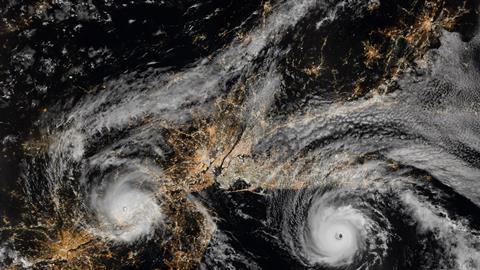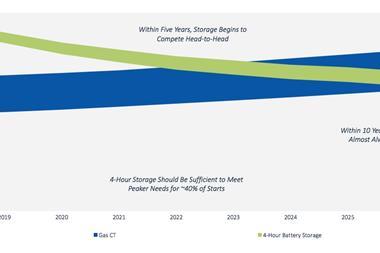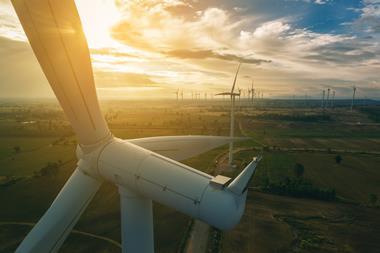Hurricane Maria, Puerto Rico’s worst natural disaster on record, highlights the impact major natural catastrophes can have on renewable energy projects and what can be learnt

When Hurricane Maria tore across Puerto Rico as a category 4 storm on 20 September 2017 it became the worst natural disaster on record to impact the island nation, which is still recovering. Renewable energy projects took a beating during the record-breaking hurricane, including solar arrays and wind turbines.
How different sites were affected has revealed a great deal about the resilience of differing structures, which can now be applied in new designs. “There were two solar arrays,” says Dan Nicholls, production and broking specialist at Miller. “In one site there was one headset on each mount, while the other had two solar panels on a mount. And while the first project escaped relatively unscathed, with the second project it literally folded the top panels onto the second panels like a sandwich, destroying both of them.”
While wind turbines are supposed to be “feathered” during dangerously high wind, which means the blades are twisted so they can no longer catch the wind and rotate, what had not been foreseen was that the power would have gone out before this could be enacted. “To feather the blades some designs are dependent on grid power, and when the grid went down some wind farms didn’t have any source of power.”
He thinks risk managers need to consider these issues and plan accordingly, such as ensuring there are diesel generators on site or another form of backup and that substations are located on higher ground in flood-prone areas. In considering building in greater resilience, risk managers should consider the uniqueness of each project and its exposures and topography.
When the grid is being repaired in the aftermath of a major hurricane, flood or earthquake, it can be a challenge to get people and materials into the area
While the direct damage was a significant issue in Puerto Rico post Maria, it was the contingent business interruption (CBI) that ultimately led to some of the biggest losses. Total economic losses resulting from Maria in the US and Caribbean reached $65 billion, according to Swiss Re estimates, of which just half ($32 billion) was insured. The extended power outages in Puerto Rico were a significant factor in escalating the financial impact of BI and CBI.
“Remediation or repair of the power grid is not within the risk manager’s control,” says Nicholls. “It can take many months for the grid to be repaired and reinstated, so it’s all very well if your project survives a nat cat event. But if it can’t dispatch its generated electricity then it doesn’t add any revenue.”
In Puerto Rico, Maria toppled 80% of the island’s power lines and flooded its generators, causing the longest and largest blackout in US history and the second-largest in the world. At the time of writing - July 2018 - tens of thousands of homeowners were still in the dark. Most CBI insurance is sub-limited to just six months, explains Nicholls.
“Nat cat events tend to affect the wider area, and transmission and distribution lines can be quite flimsy things. So when the grid is being repaired in the aftermath of a major hurricane, flood or earthquake, it can be a challenge to get people and materials into the area. They may have lost access roads and it might be a couple of months before the grid is back up and running. It’s those contingent revenue exposures that is quite a scary scenario for risk managers.”
How solar arrays and batteries are helping to stabilise Puerto Rico’s electricity network
One way of minimising CBI exposures when a grid system goes down, or is not operating at full capacity, is to consider energy storage solutions (more on this in our feature ’Resolving Grid Volatility). In this way the electricity generated can be stored and dispatched at a later date, reducing the impact on revenue.
In the aftermath of Hurricane Maria, Tesla’s solar panels and storage batteries played a big role in the recovery efforts. Elon Musk’s company bypassed the broken grid system altogether, shipping in over 1,000 batteries to the island to provide power at 662 critical locations, such as hospitals and utility companies. The Powerpacks are linked up to existing solar arrays, with the ability to hold 550 kilowatt-hours of power each.





















No comments yet